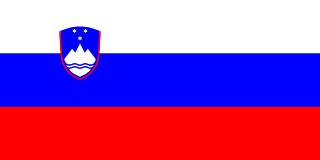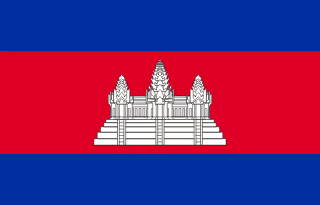

Employer of Record Guide in Slovenia
Slovenia's growing tech sector and skilled workforce make it an attractive destination for global expansion, but navigating local employment laws requires careful attention to detail. This comprehensive guide breaks down everything you need to know about hiring compliantly in Slovenia while tapping into its emerging talent pool.
Capital City
Currency
Languages
Population size
Services available in this country:

Key stats and facts
Slovenia offers a compelling mix of technical talent and competitive costs, with Ljubljana leading as the primary economic hub and a GDP per capita of $34,031. The country's demand for software developers and data scientists aligns perfectly with global hiring trends, making it an increasingly popular choice for international teams.
Major economic hubs
Skills in demand
Currency
Language
GDP per Capita
Standard Tax Rate
Your EOR guide in Slovenia
Understanding Slovenia's employment framework is essential for compliant hiring, from progressive tax rates starting at 16% to comprehensive social benefits. This detailed breakdown covers everything from payroll cycles to leave policies, giving you the clarity needed to make informed hiring decisions.
Minimum Wage
Note: Research shows conflicting figures - please verify current minimum wage rate
The minimum wage in Slovenia is €1,277.72 per month, effective January 1, 2025. This single national rate applies universally across all sectors and age groups, with no special rates for youth or tipped workers.
Payroll Cycle
- Standard Frequency: Monthly payroll
- Payment Timing: Typically on the last working day of each month
- Documentation: Payslips must be provided in Slovenian language
Individual Income Tax
Slovenia operates a progressive income tax system for 2025:
| Income Bracket (EUR) | Tax Rate |
|---|---|
| Up to €9,210.26 | 16% |
| €9,210.26 – €27,089.00 | 26% |
| €27,089.00 – €54,178.00 | 33% |
| €54,178.00 – €78,016.32 | 39% |
| Above €78,016.32 | 50% |
Tax Relief: €7,500 general tax relief available for 2025.
Tax Residency Criteria
Individuals are considered Slovenian tax residents if they:
- Spend more than 183 days in Slovenia per calendar year, or
- Have their permanent home or centre of personal/economic interests in Slovenia
Special Provision: Qualified foreign workers under 40 may be eligible for a 7% tax reduction.
Employer Payroll Contributions
Employers must contribute approximately 16.10% of gross salary for mandatory social insurance:
| Contribution Type | Rate |
|---|---|
| Pension and Disability Insurance | 8.85% |
| Health Insurance | 6.56% |
| Unemployment Insurance | 0.06% |
| Parental Insurance | 0.10% |
| Injury at Work | 0.53% |
Important Change: A mandatory long-term care contribution of 1% for both employers and employees will be introduced from July 1, 2025.
Working Hours
The standard work schedule in Slovenia is 40 hours per week (8 hours per day, Monday through Friday). Collective agreements may define shorter workweeks with a minimum of 36 hours.
Upcoming Flexibility: The "80/90/100 model" will be available from January 1, 2026, for employees over 58 or with 35+ years of service, allowing reduced hours with proportional pay reduction.
Overtime Pay
- Maximum Limits: 8 hours per week, 20 hours per month, 170 hours per year (extensible to 230 hours with written consent)
- Premium Rates:
- Minimum 30% premium for regular overtime
- 50% premium for Sunday work
- 100% premium for holiday work
- Time-off Alternative: Available if stipulated in employment agreements
Bonus Payments
- Mandatory Holiday Allowance: €1,277.72 for 2025, due by July 1st
- 13th Salary: Common practice but not legally required
- Performance Bonuses: Determined by individual contracts or company policies
Full-Time vs. Part-Time
- Full-time: 40 hours per week
- Part-time: Less than 40 hours per week
- Benefits: Part-time employees are entitled to pro-rata benefits based on their working hours
Vacation Leave
Note: Research shows potential discrepancy - please verify minimum vacation entitlement
Employees are entitled to a minimum of 4 weeks of paid annual leave. Additional vacation days may be granted for:
- Employees over 53 years of age
- Employees with disabilities
- Employees with children under 15
Usage Rules:
- Minimum 2 weeks must be taken in the calendar year
- Remaining leave can be carried over until June 30th of the following year
- Unused leave must be compensated upon termination
Sick Leave
- Employer Responsibility: First 30 working days at 80% of average salary
- Extended Leave: Paid by Health Insurance Institute of Slovenia after 30 days
- Work-Related Injuries: 100% compensation from day one
- Documentation: Doctor's certificate required for absences of 3+ consecutive days
Maternity Leave
- Duration: 105 days
- Compensation: 100% of average wage
- Eligibility: Must be insured for parental protection for 1+ year in the prior 3 years
- Timing: Typically begins 28 days before due date
- Job Protection: Protected from dismissal during pregnancy and leave
Parental Leave
- Paternity Leave: 30 days for fathers
- Parental Leave: 160 days for each parent (100 days transferable between parents)
- Compensation: Paid through social insurance system
- Flexibility: Leave can be shared between parents according to their preferences
Bereavement Leave
- Duration: 2-3 days (part of the 7 working days annual personal leave allowance)
- Qualifying Events: Death of close family members (spouse, child, parent)
- Compensation: Paid leave
Personal & Family Leave
Employees are entitled to up to 7 paid working days per year for:
- Wedding ceremonies
- Serious accidents or illness in the family
- Child's first day of school
- Other urgent family matters
Summary
| Leave Type | Duration | Compensation | Funding Source |
|---|---|---|---|
| Vacation | 4+ weeks/year | 100% | Employer |
| Sick Leave | First 30 days | 80% | Employer |
| Maternity | 105 days | 100% | Social Insurance |
| Parental | 160 days each | 100% | Social Insurance |
| Bereavement | 2-3 days | 100% | Employer |
| Personal/Family | Up to 7 days/year | 100% | Employer |
Termination Types
Termination With Cause:
- Breach of contract obligations
- Serious misconduct or criminal offence
- Requires written warning and opportunity for employee response
Termination Without Cause:
- Business reasons (redundancy, restructuring)
- Employee incompetence
- Requires proper justification and procedure
Constructive Dismissal:
- Employee termination due to employer breach of contract
Notice Period Requirements
Note: Research shows slight variations in notice periods - please verify current requirements
| Length of Service | Notice Period |
|---|---|
| Up to 1 year | 15 days |
| 1-2 years | 30 days |
| 2-25 years | 30-60 days (progressive) |
| 25+ years | 80 days |
Special Cases:
- Fault-based Termination: 15 days notice
- Employee Resignation: Cannot exceed 60 days notice
Severance Pay
Note: Research shows conflicting severance calculation methods - please verify current formula
Severance is required for terminations due to business reasons or incompetence:
| Years of Service | Severance Rate |
|---|---|
| 1-10 years | 1/5 monthly salary per year |
| 10-20 years | 1/4 monthly salary per year |
| 20+ years | 1/3 monthly salary per year |
Maximum: 10 times average monthly salary
Probationary Periods
- Maximum Length: 6 months
- Termination Notice: 7 days during probation
- Reduced Protection: Standard termination procedures don't fully apply
Final Pay Requirements
Final payment should be made upon termination (best practice: last working day) and must include:
- Outstanding wages
- Pro-rata holiday allowance
- Unused vacation pay
- Severance pay (if applicable)
Termination Documents & Process
Required Documentation:
- Written termination notice stating legal grounds
- Proper procedural documentation
Process Requirements:
- Written warning for fault-based terminations
- Employee opportunity to respond
- Possible trade union or works council consultation for business terminations
Anti-Discrimination & Retaliation Laws
Termination is prohibited based on:
- Race, religion, disability, age, sexual orientation, gender
- Political conviction, family status, trade union membership
- Special Protection: Pregnant workers, parents on leave, employees over 55, trade union representatives
National Public Holidays (2025)
Slovenia observes 15 statutory holidays:
| Holiday | Date |
|---|---|
| New Year's Day | January 1 |
| New Year's Holiday | January 2 |
| Prešeren Day | February 8 |
| Easter Sunday | April 20 |
| Easter Monday | April 21 |
| Day of Uprising Against Occupation | April 27 |
| Labour Day | May 1 |
| Labour Day Holiday | May 2 |
| Whit Sunday | June 8 |
| Statehood Day | June 25 |
| Assumption of Mary | August 15 |
| Reformation Day | October 31 |
| All Saints' Day | November 1 |
| Christmas Day | December 25 |
| Independence and Unity Day | December 26 |
Holiday Pay Rules
- Entitlement: All employees are entitled to paid statutory holidays
- Working Premium: 100% premium pay for working on public holidays
- Weekend Policy: Holidays falling on weekends are generally not compensated with substitute days
Regional Variations
Slovenia does not have major regional statutory holidays beyond the national calendar.
Required Documentation for Employment
- Employment Contract: Must be written and provided in Slovenian (bilingual versions acceptable)
- Work Authorisation: Single permit required for non-EU/EEA citizens
- Registration: Employee must register with Health Insurance Institute before first working day
- Tax Forms: Personal tax number and relevant tax documentation
- Banking Information: For salary payments
Language Requirements
- Official Language: Slovenian
- Contract Language: Employment contracts must be in Slovenian
- Payroll Documents: All payroll-related documents must be in Slovenian
Background Checks & References
Background checks are permitted with documented employee consent and must comply with:
- GDPR Requirements: EU General Data Protection Regulation
- ZVOP-2: Slovenian Personal Data Protection Act
- Permitted Checks: Criminal records, credit history, identity verification (must be job-relevant)
Data Protection & Privacy
Slovenia implements EU GDPR through the ZVOP-2 Act:
- Collection Limits: Only necessary employment-related data may be collected
- Workplace Monitoring: CCTV permitted for security purposes only, not in private spaces
- Employee Rights: Right to access, correct, and delete personal data
IP Assignment & Confidentiality
- Copyright Works: Economic rights automatically transfer to employer for 10 years
- Inventions: Governed by Employment-Related Inventions Act
- Non-Compete Clauses: Maximum 2 years duration, requires compensation of at least 1/3 monthly salary per month of restriction
Onboarding Timeline
| Step | Timeline |
|---|---|
| Job offer accepted | Day 0 |
| Employment contract signed | Day 1-3 |
| Work permit processing (non-EU) | 15-30 days |
| Health insurance registration | Before first working day |
| Payroll setup completed | Day 5-7 |
| Probation period begins | First working day |
What the EOR Handles
Borderless AI manages:
- Employment contract preparation in Slovenian
- Health insurance registration
- Tax and social contribution compliance
- Payroll processing and documentation
- GDPR compliance procedures
- Local legal representation
Worker Classification: Employee vs Contractor
Slovenia presumes an employment relationship exists when subordination elements are present. Key factors include:
- Control: Level of supervision and direction
- Integration: How integral the work is to the business
- Economic Dependence: Financial reliance on the employer
Misclassification Risks: Illegal with severe penalties including substantial fines and back-payment obligations.
Unionisation & Collective Agreements
- Right to Unionise: Protected constitutional right to form and join trade unions
- Collective Bargaining: Common practice providing enhanced benefits beyond legal minimums
- Industry Agreements: Employers must verify applicability of sector-specific collective agreements
Cultural Norms & DEI Expectations
Work-Life Balance: Strong cultural value reflected in comprehensive labour regulations and generous leave entitlements.
Communication Style: Direct and professional communication is expected in business settings.
Punctuality: Highly valued in Slovenian business culture.
Diversity & Inclusion: Strong anti-discrimination laws create expectations for inclusive work environments.
Remote Work Considerations
Slovenia has developed a regulatory framework for remote work:
- Home Working Allowance: Mandatory compensation for employees working from home
- Digital Nomad Permits: Simplified permit system launching November 2025
- Cross-Border Complexity: Remote work across borders may require EOR services due to complex tax and payroll obligations
Equipment & Expenses: Employers must provide or reimburse necessary work equipment and utilities for home-based work.
Built-in benefits packages for Slovenia
When the world is your competition, it pays to incentivize new hires and existing alike. Borderless AI benefits packages typically inlucde:

Medical Insurance

Dental Insurance

Retirement Contribution

Life Insurance

Vision Insurance
Explore other countries

Unlock global hiring potential
Simplify your payroll and hiring processes today.








